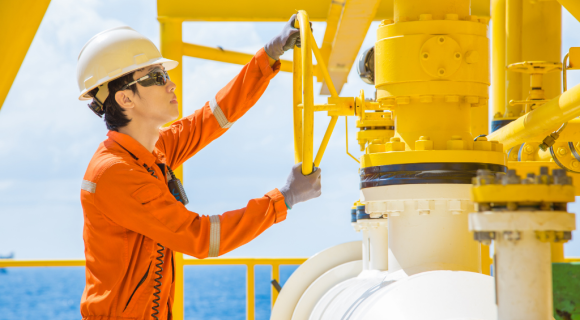Reliability personnel working remotely due to COVID-19 lockdown are able to track asset health in real time and put in place mitigation strategies to avoid shutdowns

VROC was engaged by an Oil and Gas operator in early 2020 to use it's artificial intelligence and machine learning predictive analytics platform to remotely monitor the health of their offshore platform in the North Sea to better understand reliability issues.
During the engagement the COVID-19 pandemic restrictions limited access to the offshore asset to only critical personnel. This meant that among others, Reliability Engineers and Process Teams were restricted to working from home and without any direct visibility of asset performance. In addition some Maintenance crew not directly related to requirements offshore, were also subject to these restrictions.
The operator needed to adapt to the new working arrangements, whilst ensuring the assets uptime, integrity, regulatory compliance and production targets were all maintained.

Within a three-week period, VROC was able to ingest the historical data and start downloading live data from their historian through a secure data connection.
After a week’s training on building models and dashboards and with support from VROC data scientists and engineers, the operator’s reliability and operations engineers were able to build their asset health monitoring models to focus on their own areas of interest and provide their management and teams with live and forecasted asset health information using custom built dashboards.
The VROC AI platform allowed the operator’s key asset performance and reliability engineers to deploy AI models and visualisation dashboards on critical assets e.g., compressors, generators, and water injection pumps to monitor their health and performance. These models helped in the early identification of future problems. The right maintenance personnel with the correct spares were able to be mobilised only when necessary to affect repairs, while any mitigation was done by operations personnel already on board the platform.
This has resulted in the operator being able to continue production with the requisite level of asset integrity and performance despite a lower personnel on board (POB) offshore. With each successive positive result, the customers confidence in using this model has risen to the point that it has now become standard operating procedure for reliability and maintenance operations with a long term reduced offshore head count.
Direct and immediate cost savings have come from having fewer POB and reduced maintenance during the engagement. The actual reduction in OPEX figures have not been made available by the customer, but can be inferred and are bound to have a long-term effect due to the change in the O&M philosophy with the use of the AI platform.
Whether you’re launching your first pilot or scaling AI across your enterprise, VROC’s end-to-end platform and expert team can help you unlock data, optimise performance, and accelerate results.
Interested in a demo of one of our data solution products?
DataHUB4.0 is our enterprise data historian solution, OPUS is our Auto AI platform and OASIS is our remote control solution for Smart Cities and Facilities.
Book your demo with our team today!
Complete the form below and we’ll connect you with the right VROC expert to discuss your project. Whether you’re launching a pilot, scaling AI across your enterprise, or integrating complex systems, we’ll help you turn your data into actionable insights—fast, efficiently, and with confidence.
The efficient deployment, continuous retraining of models with live data and monitoring of model accuracy falls under the categorisation called MLOps. As businesses have hundreds and even.
Learn more about DataHUB+, VROC's enterprise data historian and visualization platform. Complete the form to download the product sheet.
Learn how OASIS unifies your systems, streams real-time data, and gives you full control of your smart facility—remotely and efficiently. Complete the form to access the product sheet.
Discover how OPUS, VROC’s no-code Industrial AI platform, turns your operational data into actionable insights. Complete the form below to access the product sheet and learn how you can predict failures, optimise processes, and accelerate AI adoption across your facility.
Interested in reading the technical case studies? Complete the form and our team will be in touch with you.
Subscribe to our newsletter for quarterly VROC updates and industry news.